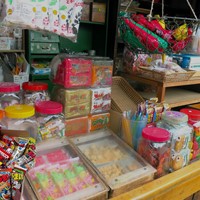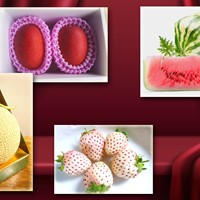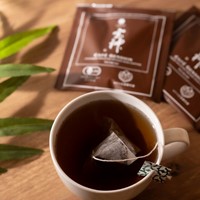Japanese Dashi Soup: What It Is and How to Make It

This page contains affiliate links.
As the base for many meals in Japanese cuisine, the rich flavors of dashi are ubiquitous throughout Japanese cooking. And for good reason – the strong, umami-filled broth helps to create a unique and delicious base flavor for foods as well as working well with other core Japanese flavors. Dashi has become a fundamental aspect of Japanese cuisine. However, there are many types of dashi stock that can be used in various ways. Here we will go over some of the main types, the common ways in which they are used, and how best to use them yourself.
What is Dashi?

Firstly, you may be wondering what dashi is and how it plays such an integral role in Japanese cooking. It is a type of soup stock that forms the basis of many standard Japanese meals, such as miso soup. It can be made from a range of ingredients – see our explanation of the different types later – but all dashi has a strong, savory flavor which is key to Japanese soups, noodle dishes, hotpot-style dishes, and more. It often appears quite watery, but don’t let this fool you; it is packed with flavor.
Types of Japanese Dashi
To fully understand dashi, it is important to explore the various types. The different kinds vary based on the main ingredient used to make them. These can be broken down into awase (combined), kombu, shiitake, or iriko dashi.
Awase Dashi (Combined Dashi)

Awase (combined) dashi, uses both kombu (Japanese seeweed) and katsuobushi, or dried bonito flakes, to create a unique and complex flavor. Katsuobushi is a type of dried fish flake that is commonly used in Japanese cuisine. It is made by first creating a kombu stock using the hot method, then adding the katsuobushi when the kombu is removed. The katsuobushi should be kept in the broth while it comes to a boil and then allowed to sit until it absorbs the water and sinks. It should then be strained to remove the flakes. Awase dashi is the most common type of dashi in modern cooking and is usually the first variety that comes to mind.
Kombu Dashi

Kombu dashi is one of the oldest and most traditional styles of dashi. It is a simple style based on just two ingredients – kombu and spring water. Kombu is a type of kelp and is a popular ingredient in Japanese cooking. There are two ways of making kombu dashi - hot (nidashi) and cold (mizudashi). Mizudashi is made by steeping the kombu in water overnight in the fridge. The shorter method, nidashi, involves soaking the kombu in cold water for a few hours or slowly heating the water and removing the kombu just before it reaches the boil.
Shiitake Dashi

Shiitake dashi uses dried shiitake mushrooms as its base ingredient. The dried mushrooms have a stronger and more concentrated flavor than fresh mushrooms. It can be made using techniques similar to kombu dashi, and sometimes they are combined. They are both great vegan/vegetarian options.
Iriko Dashi

Finally, there is iriko dashi, also known as niboshi dashi. Iriko dashi is made from niboshi, which are dried baby anchovies and sardines. The method to make iriko dashi involves boiling the dried sardines and anchovies until the broth emits a fish fragrance. This stock is great for seafood-based dishes as well as other meats.
What is White Dashi and How is it Different?

If you are interested in Japanese cooking, you may have also heard of shirodashi, or white dashi. White dashi is slightly different from the original traditional dashi. It is more complex in its ingredients and cooking method and is often used in different ways.
Shirodashi is usually made with a dashi base but has other ingredients such as mirin, light soy sauce, and sugar added to it. It doesn’t alter the color of a dish when used and so is popular in light-colored dishes or foods where the color is considered important. These include foods such as tamagoyaki (rolled omelet), chawanmushi (steamed egg custard), and udon noodles.
How to Use Dashi

Dashi can be used in a range of ways for Japanese cooking. As it is commonly considered a soup stock, it is used in almost all Japanese soups and liquid-based dishes including oden, udon, soba, ramen, stews (nimono), shabu-shabu, and various others.
However, it can also be mixed with flour to create a base for more solid foods, like okonomiyaki and omelets. If used sparingly and mixed with the right ingredients, it can create a base for dipping sauces or vegetable cooking. One of the most common ways you will see dashi used is in miso soup, the ever-present side to almost any meal in Japanese cooking.
How to Store It
Dashi is best used fresh and so ideally should be used on the day of cooking. Leftover stock can be kept refrigerated in a covered container for a few weeks. Freezing will allow it to be used for up to 3 months after cooking.
Where to Buy Dashi
The base ingredients to make dashi can generally be bought from a large Asian supermarket or online. However, there are now a number of convenient *instant* methods of making it. These include dashi powder, which usually contains a concentrated granule version. There are also dashi packets, which work similarly to teabags. The ingredients are dried and contained in small bags which can then be put in boiling water to bring out the flavor. These packets are a great option if you are unsure about timing and proportions when making dashi. It is sometimes possible to find a liquid concentrate or paste type as well. These options should also be available at any major Asian supermarket or online.
Dashi is as Versatile as it is Delicious
Dashi is the base of almost all Japanese food and so is an important ingredient to know about if you are looking to try out Japanese cooking. With its deep umami flavor and unique qualities, it is a great base ingredient for a variety of dishes, as well as a possible addition to Western meals. In utilizing the various types, you are able to create unique, subtle, and specialized dishes. Dashi is an incredibly important ingredient in Japanese cuisine and with this guide, you should be able to cook it yourself and incorporate it into a range of meals. Enjoy!
Like what you read? Explore our other content on Japanese cuisine here!
















